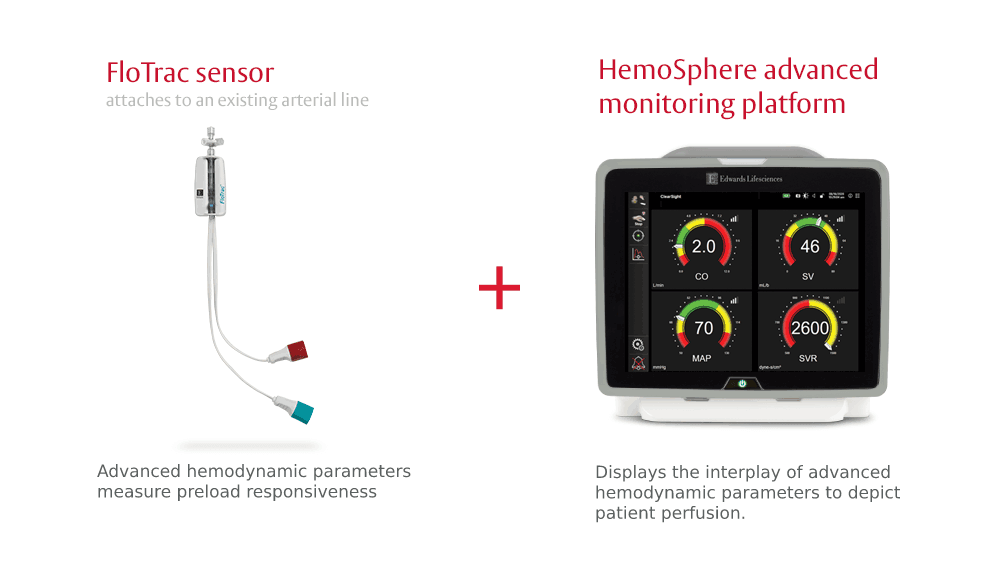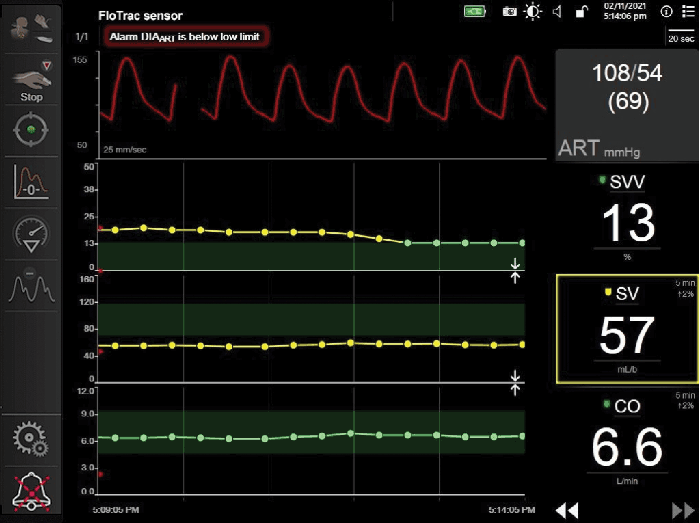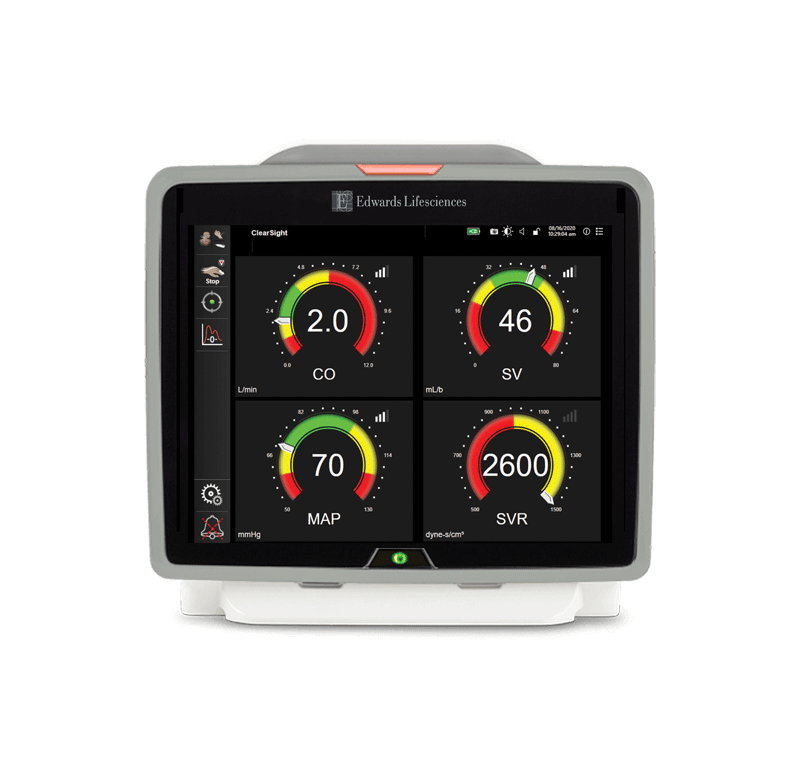
Trusted
Chosen to monitor over 5.2 million patients*
Pour le canadien français, veuillez suivre ce lien.
Minimally-invasive hemodynamic monitoring

The minimally-invasive FloTrac system is a proven solution for advanced hemodynamic monitoring that automatically calculates key flow parameters every 20 seconds. Continuous clarity provided by the FloTrac system offers proactive decision support to manage hemodynamic instability and help you ensure adequate patient perfusion.
The FloTrac sensor parameters displayed on the HemoSphere monitor show patient status at a glance, for visual clinical support and increased clarity in volume administration.

Proactive decision support offered by the FloTrac system helps guide individualized treatment decisions for your moderate- to high-risk surgery patients, and can be utilized perioperatively to proactively manage your patient’s physiological status in rapidly changing clinical situations in acute care settings.

Chosen to monitor over 5.2 million patients*

73 Countries.* Used by clinicians worldwide for minimally-invasive volume management.

Referenced in over 300+ clinical studies* spanning the OR and ICU

Provides a clear hemodynamic picture across various patient conditions and surgical procedures
*Data on File
Offers specific monitoring of a broad range of changing patient conditions
The FloTrac system algorithm is based on the principle that aortic pulse pressure (PP) is proportional to stroke volume (SV) and inversely related to aortic compliance. The algorithm compensates for the effects of compliance on PP based on age, gender, and body surface area (BSA).

Through continuous beat detection and analysis, the FloTrac system algorithm allows for the ongoing use of Stroke Volume Variation. The FloTrac system algorithm enables the display and use of SVV in patients with multiple premature atrial or ventricular contractions and allows you to guide volume resuscitation despite most arrhythmias.5,6,7
The SVVxtra algorithm restores the respiratory component of the arterial pressure curve so that SVV continues to reflect the physiological effects of mechanical ventilation on the heart.5
| Model | Description | Length | Unit of Measure |
| MHD8R | FloTrac sensor | 84 in/ 213 cm | 1 Each |
| MHD8R5 | FloTrac sensor | 84 in/ 213 cm | 5 Each |
| MHD6R | FloTrac sensor | 60 in/ 152 cm | 1 Each |
| MHD6R5 | FloTrac sensor | 60 in/ 152 cm | 5 Each |
| MHD6AZR | FloTrac sensor with VAMP adult system | 60 in/ 152 cm | 1 each |
| MHD6AZR5 | FloTrac sensor with VAMP adult system | 60 in/ 152 cm | 5 Each |
| MHD6C502 | FloTrac sensor with VAMP adult system | 60 in/ 152 cm | 1 Each |
| MHD8C503 | FloTrac sensor with VAMP adult system | 84 in/ 213 cm | 1 each |
The minimally-invasive FloTrac system offers continuous clinical decision support to enable proactive clinical decisions.
The FloTrac system provides access to advanced hemodynamic parameters allowing you to evaluate hemodynamic instability and guide appropriate treatment.
Studies show associations between intraoperative hypotension and increased risk of acute kidney injury (AKI) and myocardial injury - the leading cause of post-operative mortality within 30 days after surgery.
Advanced hemodynamic monitoring parameters CO, SV, SVV, SVR, and MAP provided by the FloTrac system can help you determine the cause of instability.
If the underlying cause of hemodynamic instability is related to flow generation, continuous parameters provided by the FloTrac system can help you determine appropriate fluid therapy.
Continuous assessment of pressure and flow parameters offers decision support to help manage the duration and severity of intraoperative hypotension episodes.

We are committed to providing your institution, clinicians and staff with the highest levels of customer service and support to ensure seamless product implementation and ongoing use, including:
24/7 Technical support
For product information and orders
